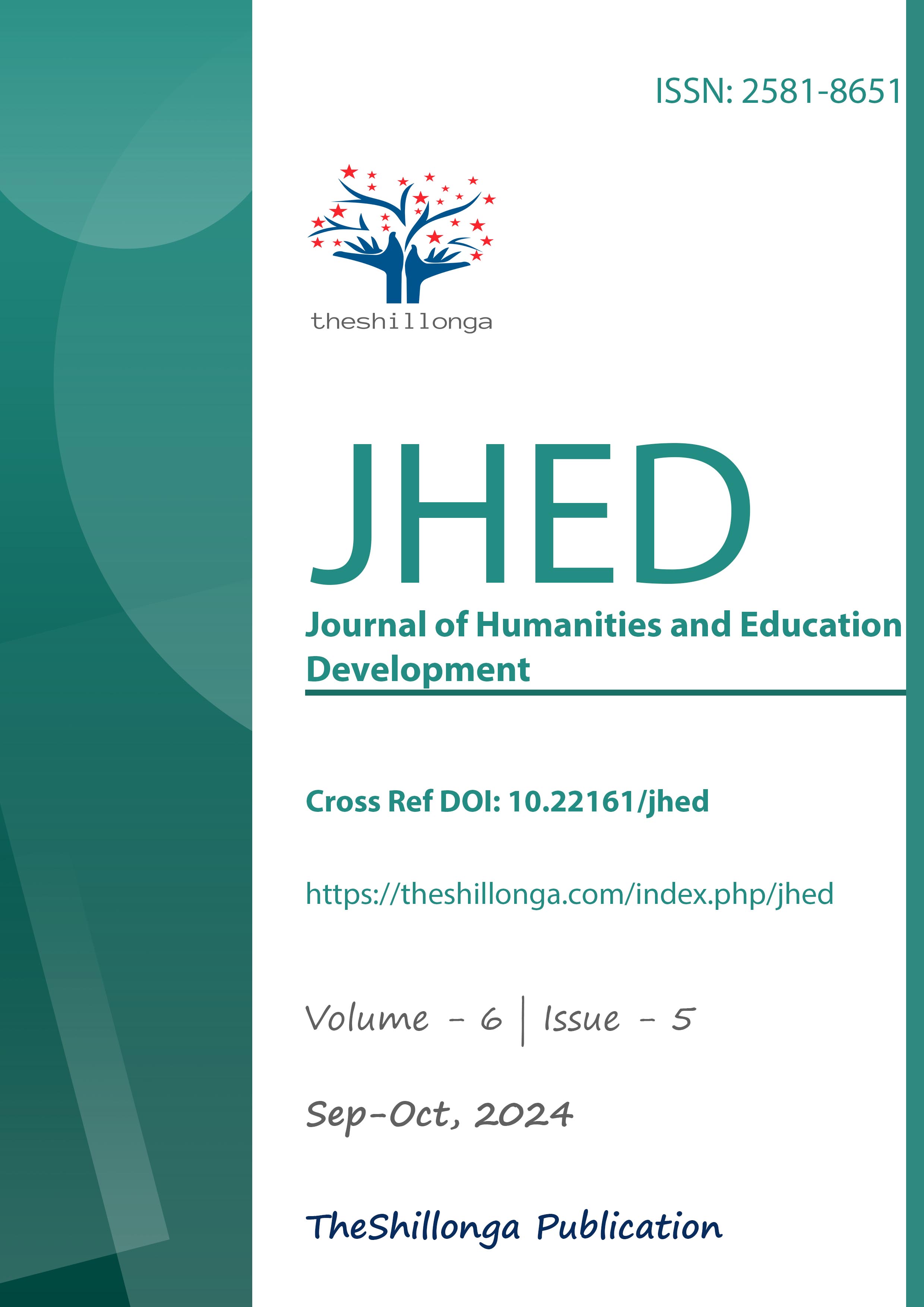An Overview Regarding the U.S domestic Economic Strategies: Role of Think Tanks
DOI:
https://doi.org/10.22161/jhed.6.5.12Abstract
Even though federal government of U.S play the primary role in managing the nations various systems such as fiscal policy, healthcare, defense and welfare, the existence of different political ideologies plays a part in national and international stability[1] , in sense that each ideology strategy in managing economic issues reach a different conclusion, proved by the numerous economical tragedies such as the greater recession , implements the bases of each ideologies perspective on government's role in reducing economic inequality, addressing job displacement due to technological change, and striking a balance between free market principles and government intervention during economic crises.1 To discuss the economical view of each side, one must fully understand in clarity the differences between two ideologies, in simplest form liberalism is described by the government's sole responsibly in preserving freedom protections its citizens individual liberty while also minimizing its intervention in its citizens lives, on the other hand, conservatism allows the government vast influence thus to conserve the established norms and institutions such as the cultural and religious traditions of its nation. While this is nearly the correct definition of what each ideology stands for, such political movements do tend to abuse power through the ideological privileges they stand for. Furthermore, the existence of the federal government is crucial in interfering with conservative or liberal administrations when their policies threaten economic stability. Federal governments’ regulatory agencies such as federal reserves and the Environmental protection agencies exist to act as checks on extreme economic policies. Under a conservative administration that Favors deregulation and reduced taxes, the federal government may intervene to prevent excessive corporate power or environmental harm that could arise from such policies.[2] Conversely, in a liberal administration pushing for expansive social programs or aggressive tax hikes, the federal government’s budgetary and constitutional frameworks can limit excessive spending or prevent overreach that may stifle economic growth.[3] Thus, regardless of the political ideology in power, the federal government ensures a balanced approach to economic management by safeguarding essential public interests while keeping national economic stability.
[1] Conservatives vs. Liberals: The Economic Debate - Cameron School of Business Blog (stthom.edu)
[2] https://doi.org/10.1596/978-1-4648-0057-3
[3] https://www.pewresearch.org/politics/2017/10/24/5-views-of-the-economy-and-the-social-safety-net/
Downloads
References
Dowdenr. (2017, April 13). Conservatives vs. Liberals: The Economic Debate - Cameron School of Business Blog. Cameron School of Business Blog. https://blogs.stthom.edu/cameron/conservatives-vs-liberals-the-economic-debate/
Molinuevo, M., & Sáez, S. (2014b). Regulatory Assessment Toolkit: A Practical Methodology For Assessing Regulation on Trade and Investment in Services. In The World Bank eBooks. https://doi.org/10.1596/978-1-4648-0057-3
Pew Research Center. (2024, April 14). 5. Views of the economy and the social safety net. https://www.pewresearch.org/politics/2017/10/24/5-views-of-the-economy-and-the-social-safety-net/
Dehnavi, E. A. (2024). The Trump Doctrine: Redefining US Foreign Policy through Immigration, Security, and Diplomacy. International Journal of Humanities and Education Development (IJHED), 6(5), 26-28.
Dehnavi, E. A. (2024). An Analytical Examination of Iran-USA Relations Post-Islamic Revolution: Extended Scientific Review. International Journal of Humanities and Education Development (IJHED), 6(5), 23-25.
Dehnavi, E. A., & Safavipour, A. (2024). Decoding Iran’s Proxy Strategy: Determent or Destabilization? A Review and Scientific Commentary. International Journal of Humanities and Education Development (IJHED), 6(5), 1-6.
Dehnavi, E. A., & Fiedler, R. (2024). Adventures of Two Captains’ Trilogy and US Exceptionalism in their Foreign Policy: Manifestation of Think Tanks in a literary work.
Fiedler, R., & Dehnavi, E. A. (2024). Navigating Engagement with Iran: Exploring US Strategies and Options: A Futuristic Scenario and Review.
Fiedler, R. A., & Dehnavi, E. A. (2024). The Styles in the American Politics Volume II, Conservative Think tanks and their Foreign Policy: A Booklet. ResearchGate.
Ali, A., Ellias, D. A., & Mobin, K. (2020). Mexican immigrants challenges for American Identity. Journal of Critical Reviews, 7(6), 945-950.
Ellias, D, Daheshiar, H. (2020). Changes and indicators of trump's new immigration policy plan, Journal of Economics and Administrative Sciences, 1- 10.
Dehnavi, E., Alizadeh Jamal, Mohammad, (2020). From Containment to Americanism, TRD Gmbh.
Dehnavi, E. A., & Adami, A. (2022). Futuristic research of basic problems in the way of negotiations between Iran and the United States: 10.2478/bjlp-2022-002064. Baltic Journal of Law & Politics, 15(3), 888-899.
Dehnavi, E. A., & Tabatabaei, S. M. (2021). Principles and positions of US foreign policy against terrorism. EFFLATOUNIA-Multidisciplinary Journal, 5(2).
Dehnavi, E., Zargarbashi, S. R., (2020). Factors affecting Canada's Foreign Policy, Conference: BASIC AND APPLIED RESEARCHES IN the MODERN WORLDAt: St. Petersburg, 1-7.
Dehnavi, E. A., & Nourmohammadi, M. (2023). Factors of the prevalence of authoritarianism and the push on democratization in the Middle East.
Kopp, C. M. (2024, June 20). Income Inequality Definition: Examples and How It's Measured. Investopedia. https://www.investopedia.com/terms/i/income-inequality.asp
Kowalski, D. (n.d.). The New Trickle-Down Theory of Economics. Foundation for Economic Education. https://fee.org/articles/the-new-trickle-down-theory-of-economics/
Meyer, B. D., Jencks, C., Hoynes, H. W., & Bitler, M. P. (2010b, September 1). The State of the Social Safety Net in the Post-Welfare Reform Era [with Comments and Discussion]. Brookings. https://www.brookings.edu/articles/the-state-of-the-social-safety-net-in-the-post-welfare-reform-era-with-comments-and-discussion/
Pew Research Center. (2024, April 14). 5. Views of the economy and the social safety net. https://www.pewresearch.org/politics/2017/10/24/5-views-of-the-economy-and-the-social-safety-net/
Hayes, A. (2024, May 31). Laffer Curve: History and Critique. Investopedia. https://www.investopedia.com/terms/l/laffercurve.asp#:~:text=The%20Laffer%20curve%20shows%20the,disincentivizes%20workers%20from%20earning%20wages
Ettlinger, M. and Linden, M. (2012, August 1). The failure of supply-side economics, Center for American Progress. Available at: https://www.americanprogress.org/article/the-failure-of-supply-side-economics/
Segal, T. (2023, September 25). Monetary Policy vs. Fiscal Policy: What's the Difference? Investopedia.https://www.investopedia.com/ask/answers/100314/whats-difference-between-monetary-policy-and-fiscal-policy.asp
Fernando, J. (2024, September 27). Inflation: What It Is and How to Control Inflation Rates. Investopedia. https://www.investopedia.com/terms/i/inflation.asp
Downloads
Published
Issue
Section
License

This work is licensed under a Creative Commons Attribution-NonCommercial 4.0 International License.


















